“Horizon” Costume Designer Lisa Lovaas on Dressing Kevin Costner’s Epic Western
“I like big,” says costume designer Lisa Lovaas, and that’s exactly what she got by signing up for Kevin Costner’s new mega-Western. Horizon: An American Saga – Chapter 1, in theaters now, runs three hours, and its sequel, two hours and 44 minutes long, hits in August. Production on Chapter 3 is now in progress. Filmed in Utah, Chapter 1 follows white settlers battling Native Americans in and around the frontier town of Horizon, Arizona, in the 1860s. Multiple storylines feature dozens of characters, including pioneers portrayed by Costner, Sienna Miller, Sam Worthington, and Luke Wilson in opposition to Owen Crow Shoe and Tatanka Means’ Indigenous leaders and their followers.
Speaking from her home in Los Angeles, Lovaas, whose credits include four Transformers movies, Black Widow and The Amazing Spider-Man 2, describes Horizon‘s sun-baked location shoot, explains why her Native American wardrobe eschews buckskin stereotypes, and details what it was like to collaborate with director/producer/co-writer/star Costner.
In Horizon, white men wear woolen clothes just as they did in the 1860s. Shooting outside beneath the broiling Utah sun, did the actors have any issues wearing heavy clothes?
Not one actor complained about the heat when they put on wool pants, wool jackets, wool pants, and wool vests. Even if they’re walking in from this ridiculous heat, nobody said “Oh, this is going to be really warm.” They just looked at themselves in the mirror and saw the character they were looking for. We had little ice packs that we could put into somebody’s pull point at the back of their neck because it was 120 degrees a lot of the time, but I’ve never been on a movie before where everyone’s been so happy to work so hard and be so dirty.
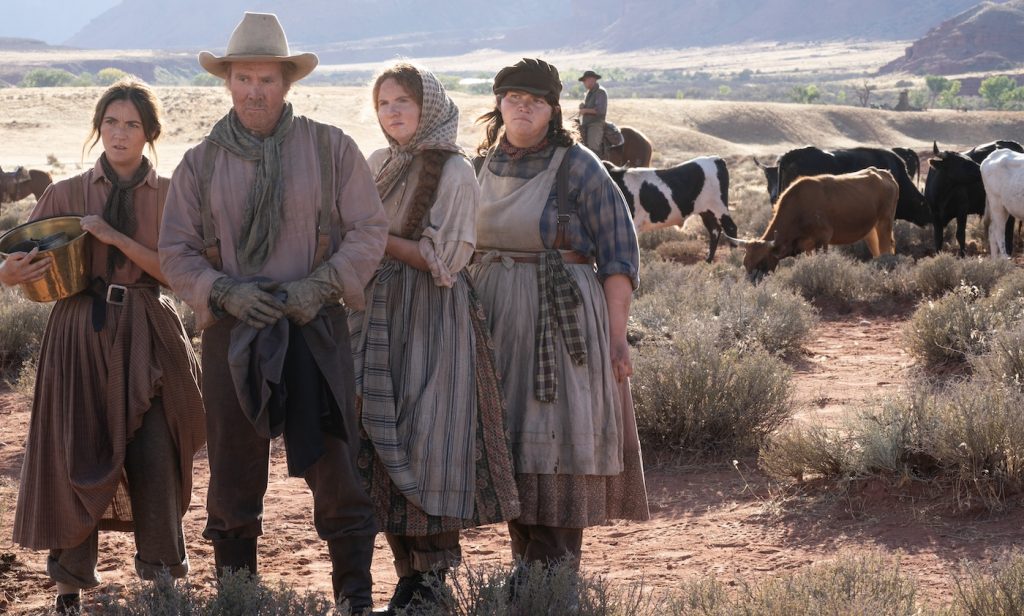
Dirty?
Because we were filthy! When the wind picks up, you have to remember to close your mouth. I’m lucky I wear glasses because [of] the amount of eye drops people were using day to day. We had a slogan on this movie, “I can’t wait to get home and take a shower tonight.”
Let’s break down the look for key Horizon characters, starting with Sienna Miller as pioneer homemaker Frances.
SPOILER ALERT
The first time we see Frances, she’s at a dance that turns into a massacre. I had to be careful with the fabric I chose so that when Sienna’s [hiding] in the tunnel, her clothes could get dirty and stay dirty. That sounds weirdly technical, but if I had done Sienna in a solid dress, you would have seen every mark [of dirt], and the takes would not match.
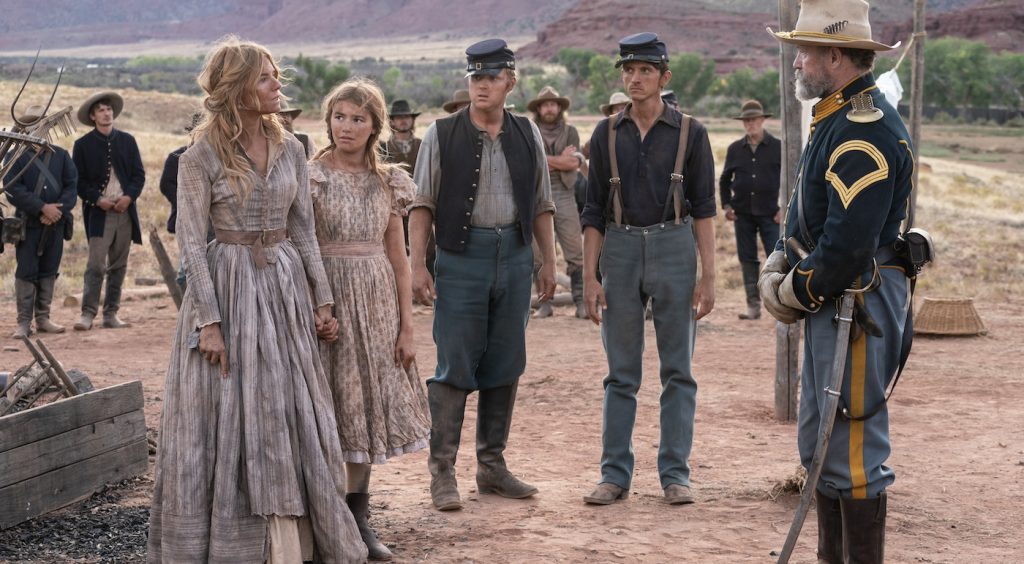
So you put Frances in a patterned dress?
Yes. She has a house on the hill and a little extra money, so I wanted to establish her as a mom and a pioneer woman. That’s how we ended up with that dress made for us by Dale Wibben, a master of period women’s clothes. The inside of the dress was just as exquisite as the outside, with all the stitching.
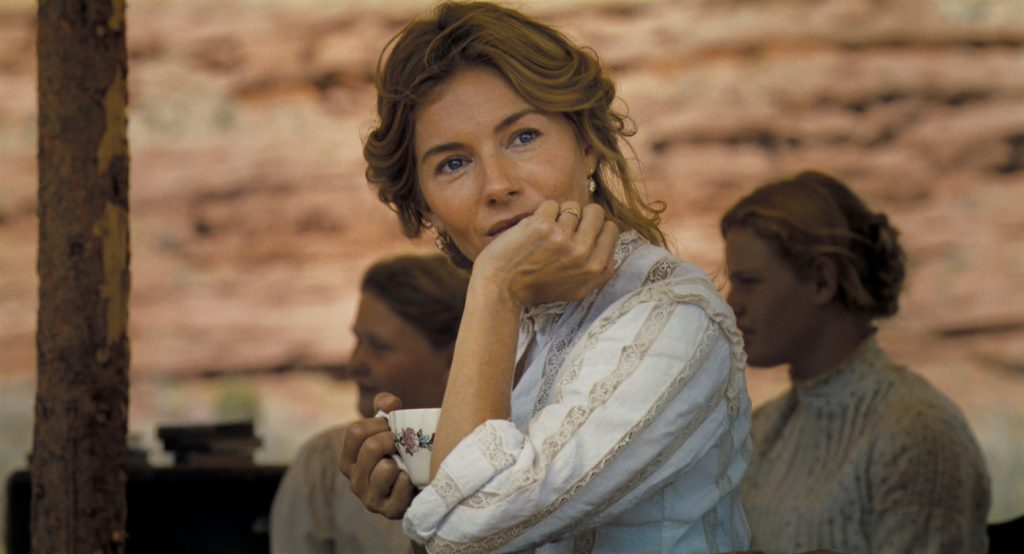
How did you research the fabrics and silhouettes for this period?
We looked all over the world trying to get fabric swatches that would be appropriate for 1862. I went to [Los Angeles-based] Western Costume and American Costume to see vintage dresses from the period. I’d take photographs or put a dress on the Xerox machine and have that fabric printed. With Frances, a swatch came in from England, originally made in India, and it was perfect, so that’s what we used.
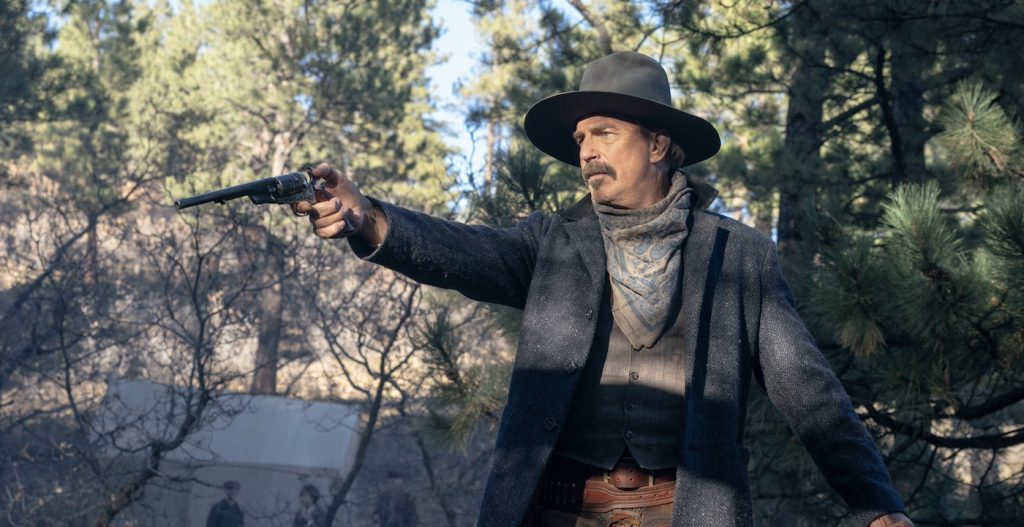
Kevin Costner shows up as this mysterious gunslinger Hayes Ellison. Nearly all the men in this picture wear neckerchiefs or scarves and so does Hayes, but his scarf somehow looks more elegant than the others. Was that deliberate?
He is mysterious. People won’t really know who Hayes is until Horizon 3, but I wanted to dress him with a unique strength of character, which is where the scarf comes in. We block-printed the scarf.
Block print?
It’s this very traditional wood block-on-cotton technique that’s been done for hundreds of years because it was a fairly common, inexpensive way to decorate a fabric. Then we over-dyed it and reworked the scarf to show the audience that this character has a sensitivity that will be revealed at some point. Kevin loved the austere look, which also showed some softness in the scarf.
Native American characters like Owen Crow Shoe’s Pionsenay and Tatanka Means’ Taklishim defy Hollywood stereotypes by avoiding buckskin in favor of cream-white cotton trousers. How did you arrive at that look?
Kevin didn’t want buckskin. He wrote in the script that these characters were White Mountain Apaches from the southern part of the country, so he wanted to show the Spanish influence. That’s why we have Pionsenay wearing that poncho. The white and cotton also come from the Spanish influence. There were enough images and illustrations in the historical record for me to design the costumes we put on screen.
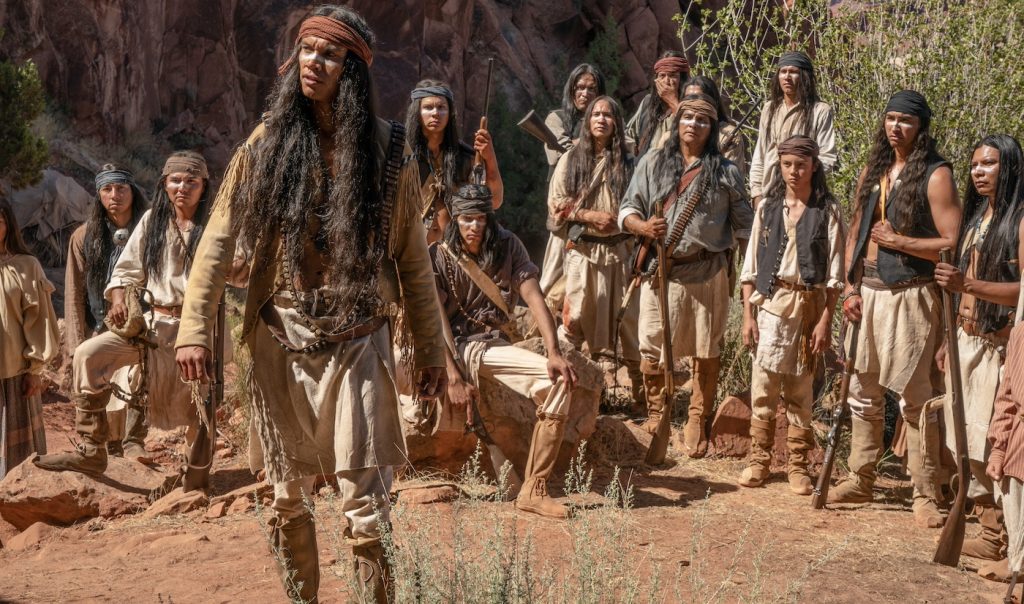
Another storyline follows a wagon train that includes this fancy English couple, Hugh and Juliette, played by Tom Payne and Ella Hunt. How did you distinguish them from the others?
Because they’re supposed to be outsiders, I wanted Juliette to wear something that stood out so I screen-printed a unique piece where all of the stripes met at the waist in gold and yellow. There was so much gold and yellow in the landscape that dress just came alive and looked exquisite on Ella. In Horizon 2, you’ll see a big evolution in her character so I wanted to go very bold with Juliette.
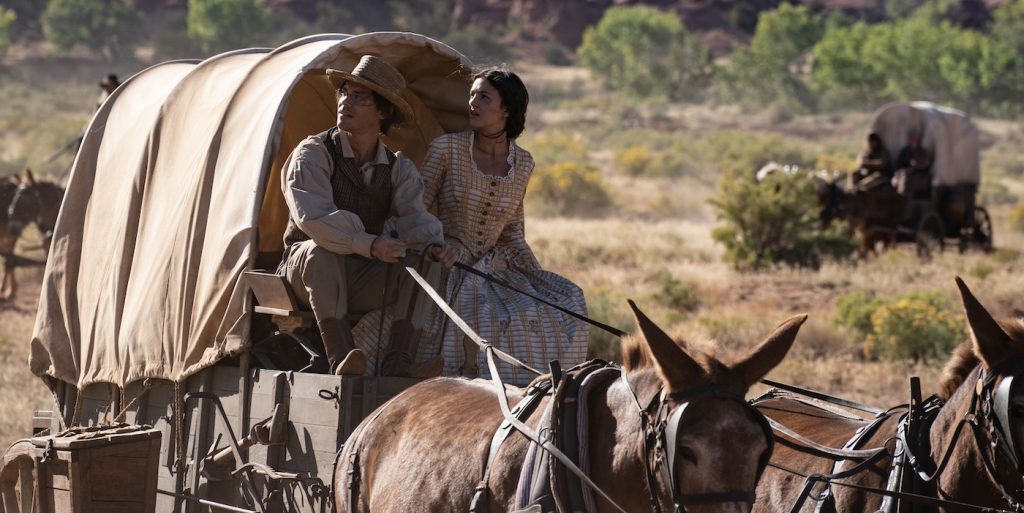
Luke Wilson plays Matthew, the wagon train leader. What references did you consider for his costume?
Kevin looked at this one painting I’d shown him by [western artist Fredric] Remington and said, “That’s Luke.” I sent the image to Luke and said, “This is what Kevin likes for you.” Luke says, “There are four guys in that painting!” But for Luke in Horizon 3, his look comes from pieces of this painting that Kevin loved. It was so clear to Kevin, and that made it easy for me.
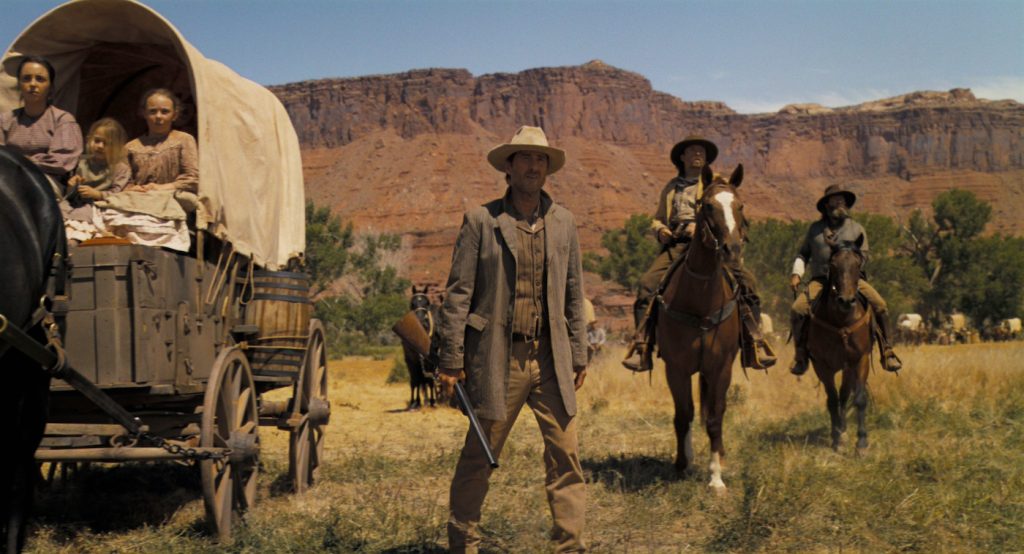
Most pioneers in this movie wore hats but they don’t really look like cowboy hats. Why is that?
Cowboy hats, with the curl-up, came a little later. I tried to keep the hats practical — sun, rain, wind — so that meant bigger brims. Each dude had a strong idea when he was trying on hats, which is great because that’s also where men put most of their effort during this period. A couple of characters from the wagon train would try on four different hats, and you go, “Ugh, this isn’t going well.” Then, by the fifth hat, you immediately get this feeling: “It’s perfect.”
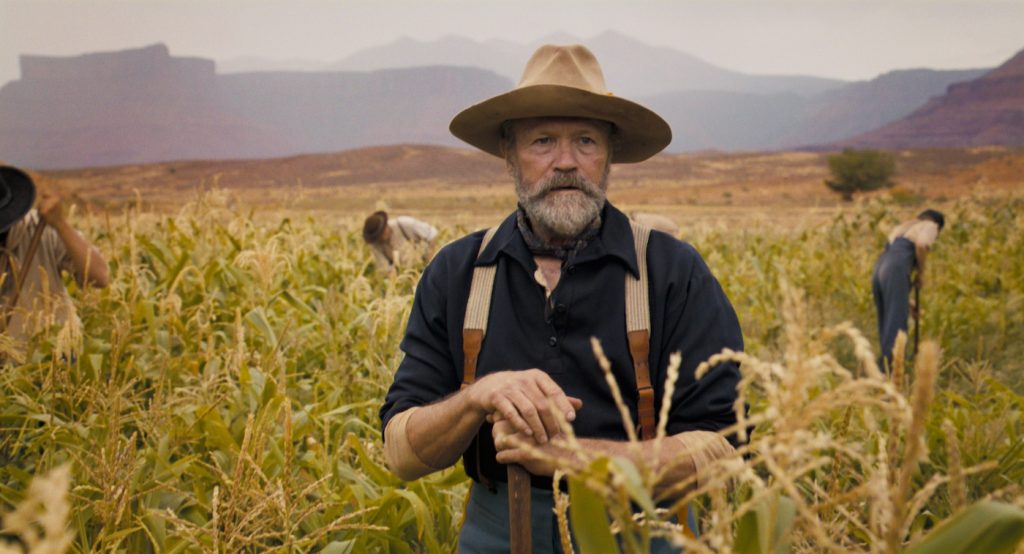
You’ve costume-designed action movies like Transformers: Age of Extinction and Black Widow, but you’d never teamed with Costner before or made a Western. How did you get the Horizon gig?
This man I’d worked with on the Transformers series called me and said, “Kevin needs somebody like you who knows how to do big shows.” So Kevin and I had a nice conversation. I sent him 120 pages of images. Then….nothing. I was like, “Oops. What happened?” Come to find out that Kevin was working on Yellowstone, and the thing I’d sent was so big he had to send somebody to town to download the file. When Kevin finally saw the images, he was very happy because everything had been researched and was real.
And that’s when he hired you?
Well, I also told Kevin about my grandfather, who worked at the Tuba City Navajo reservation in Arizona. He’d wear all white — white shirt, white hat, white suit — so I wanted to do an homage to him in Horizon because there’s a scene with a doctor in this camp. And Kevin said, “Absolutely!” He liked the story of my grandfather working with the Navajo. I think that’s what sealed the deal!



